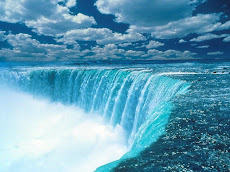 Fjords and Mountains (western Norway)
Fjords and Mountains (western Norway)Sailing into the Norwegian fjords, you find yourself in a landscape that very few places can offer. You sit on deck and glide through the majestic scenery, with steep cliffs towering over you on both sides. High above you, water and glaciers form beautiful waterfalls that dance down the almost vertical mountainsides.
Beneath you swims what could be dinner. You cast your line into the fjord and seabirds flap around the boat as you reel in the freshest of mackerel. On narrow rock ledges stand small, abandoned crofts, testament to the tough and lonely life lived here until recently.
The Lofoten Islands
On the tip of Lofoten you find the island of Røst and many othe r islands, islets and reefs. These are home of the largest number of nesting birds in Norway, with approximately one quarter of the country's seabird population. Visit the Skomvær Lighthouse - the final outpost overlooking the Atlantic Ocean.
r islands, islets and reefs. These are home of the largest number of nesting birds in Norway, with approximately one quarter of the country's seabird population. Visit the Skomvær Lighthouse - the final outpost overlooking the Atlantic Ocean.
Besides, Moskenes has plenty to offer for those who want a date with the natural elements. A boat trip through Moskstrømmen, characterized as one of the most fiercest and dangerous maelstroms in the world, brings you to the "outside" of Lofoten. Here you find traces of settlements dating thousands of years back in time. The gigantic Kollhellaren Cave in Refsvika is a coastal cavern with approximately 3,000-year-old cave paintings.
The Arctic
Arctic Norway is the kingdom of light. In the summer, the sun never sets. It is a surreal feeling, walking around the spectacular countryside in sunlight at three in the morning. The mou ntains form a magical backdrop against a sky that lights up with spectacular colours.
ntains form a magical backdrop against a sky that lights up with spectacular colours.
Sometimes the northern lights come all together, dancing across the sky, orange, purple, green and sunset red. Other times they are simply curtains of computer-screen green or a twister of wispy light. The northern lights are never the same twice.
And as the seasons change, the sun disappears permanently for the winter. The climate shifts between harmony and wildness, and the magical Northern Lights dance across the sky.
Whale of a time in Vesteralen
A fountain of water stands up in the air only 30 metres away and you can make out the size of the 15 – 16 metres long animal in the water, as it glides slowly forward for a while.
Then the captain shouts “diving!” and the whale arches his back, lifts his big fluke (his tail) and disappears again into the deep accompanied by the sounds of ecstatic children, clicking cameras and an applauding international audience.
King crab safaris in Northern Norway
You too can join the professional divers under water if you have a divers’ license. But most guests are content with seeing the big monster from ashore or a boat as it is surfaced and put into the boiling pot. Not surprisingly really, as the red king crab can reach two metres between the claws and weigh up to 15 kilos. A snap of its claw is enough to remove a man's finger.
join the professional divers under water if you have a divers’ license. But most guests are content with seeing the big monster from ashore or a boat as it is surfaced and put into the boiling pot. Not surprisingly really, as the red king crab can reach two metres between the claws and weigh up to 15 kilos. A snap of its claw is enough to remove a man's finger.
Soviet scientists introduced the red king crab to the Murmanskfjord near the border with Norway in the 1960s. The scientists wanted to increase the yield from local fisheries. Since then, millions of crustaceans have spread west into Norwegian waters.
Mountains and wilderness
Norway and Svalbard (Spitsbergen) consist of large areas of unspoilt nature and vast tracts of wilderness. These are unique natural habitats that we want to protect without human encroachment, be it in the form of fencing or official signs.
Norway is also a long, drawn out country where weather conditions along the coast or in the mountains can change at the drop of a hat. It is therefore important that you as a tourist are aware of the forces of nature and that you take with you the necessary gear for surviving in the countryside.


No comments:
Post a Comment